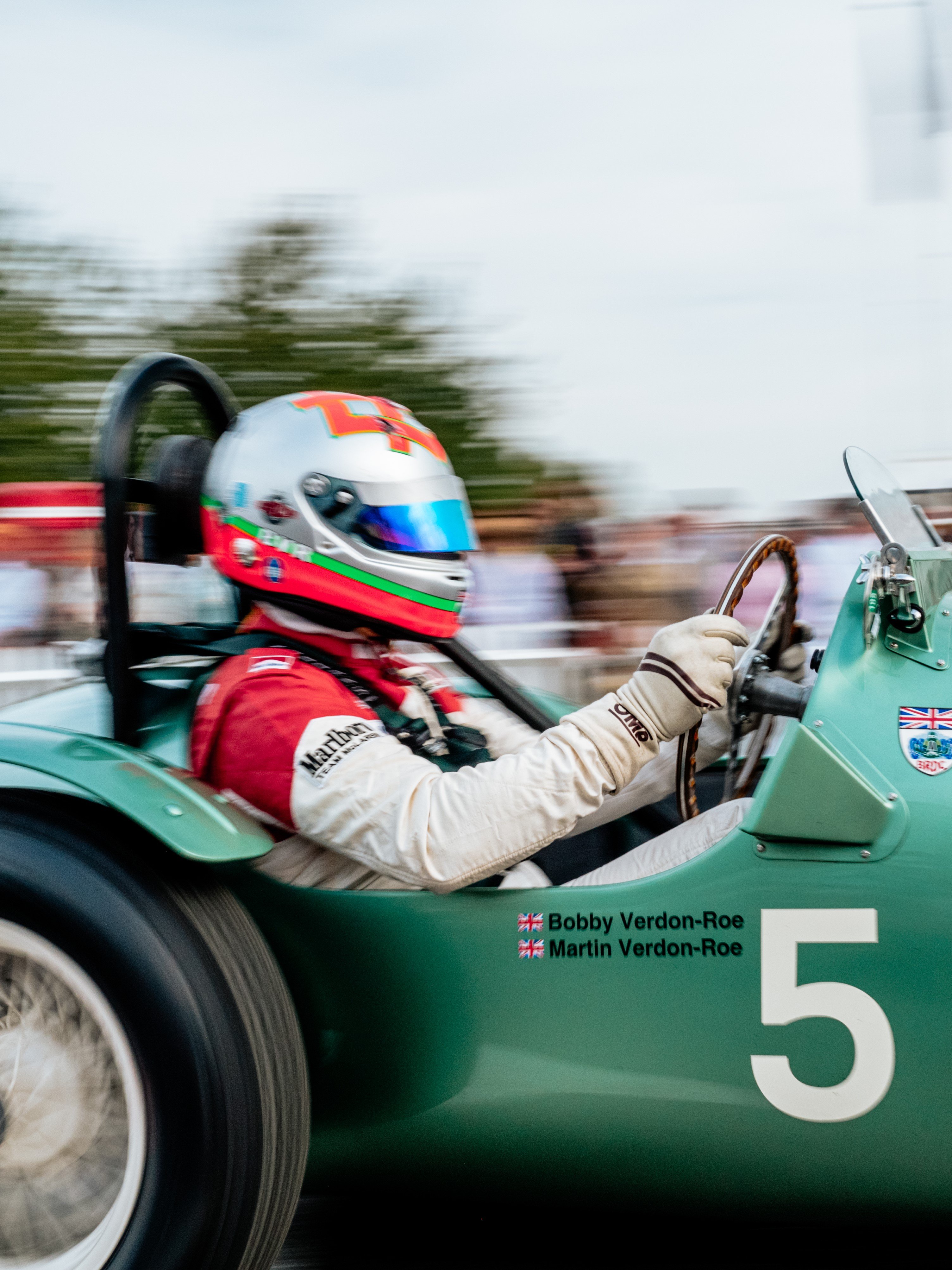Up close with the cars of Jim Clark’s legendary 1965 season
A big part of this year’s Goodwood Revival has been our celebration of Jim Clark’s stellar 1965 season. Not only did the Scottish farmer claim his second Formula 1 World Championship, but he also won the Indianapolis 500, the Formula 2 championship and the Tasman Series. It cemented his reputation as a talented and versatile driver. No other driver has won an F1 title and the Indy 500 in the same year, and it is unlikely that any other ever will again.
He did all of this at the wheel of Lotus cars, and they were all gathered here at Goodwood, together in one place for the first time. Sixty years on from that remarkable season of achievements, Clark’s magnetism remains strong and many still consider him to be the greatest racing driver of all time.

Clark set the tone from the off with the Type 33
Lotus’ new F1 contender for 1965 was the Type 33, and chassis number R11 made its first public appearance in practice for the non-championship Race of Champions at Brands Hatch. Its first competition was another non-championship event, this time the Syracuse Grand Prix. Clark claimed pole position and then ran in third place for most of the race. Retirements ahead of him allowed the mechanically sympathetic Scot to cruise to victory.
Clark sat out of the Monaco Grand Prix because he was busy winning the Indianapolis 500 on the same weekend. When he returned, 33-R11 has been upgraded with the new 32-valve version of the 1.5-litre flat-plane crank Coventry Climax V8. It was used to good effect: Clark chalked up three consecutive wins in Belgium, the UK and Germany. The improved high-speed performance of the upgraded engine proved fruitful on fast circuits. At the Nürburgring, Clark’s pole-setting lap time was three seconds faster than his closest opponent. Six wins from six starts secured the 1965 World Championship in definitive fashion.
Today, 33-R11 has been restored by Classic Team Lotus while maintaining as much originality as possible.
The most original, unrestored Clark car
You can forgive this Type 35’s slightly patchwork appearance when you learn that it is completely unrestored. Its racing career ended in 1966 and it is freeze-framed exactly as it came off the track after its final race. What’s more, it’s been in storage for decades and made its first public appearance in 50 years earlier this year as part of the Jim Clark celebrations at the Classic Team Lotus Garden Party and at Duns Castle.
In 1965, when the car made its debut, F2 was running to 1.0-litre rules and Lotus used the four-cylinder Cosworth SCA. Clark’s car is chassis 35-F-3 and it used it to claim five wins, out-pacing team-mates Mike Spence and Peter Revson.
The Type 32B was made to measure for Clark
The Type 32B was built specifically for Jim Clark to compete in the Tasman Series. It’s the only Lotus racing car to have been built specifically for the Scot. Team Lotus entered it into thirteen races, and Clark was the only one to drive it.
The Tasman Series was for cars that were similar to F1 cars of the era, one key difference being the retention of 2.5-litre engines. Clark’s bespoke chassis 32-9 was based on the previous season’s F2 chassis but with a wider track. Tasman races were 150 miles, which meant a lighter chassis from a lower formula than F1 was advantageous. It used the 2.5-litre Climax four-cylinder engine.
By the time the circus reached Warwick Farm, Clark had taken four wins in a row which put him in a good position to fend off Bruce McLaren who was second on the points table. A fifth place at Longford brought Clark’s points tally to 35, which was 11 points clear of his rival from New Zealand. Clark had one close to 75 percent of the races he’d entered.
Lotus’s Indianapolis 500 winner
The Lotus Type 38 that Jim Clark drove to victory at the 1956 Indianapolis 500 was a development of the Types 29 and 34. It was a lot larger than F1 cars of the era but diminutive compared to the American roadsters that were more typical of the Indy 500. It also had offset suspension to make the most of turning only left, but that wasn’t something that caught on.
Something that did catch on was a mid-mounted engine. American teams had been reluctant to follow F1’s lead in that regard, but they were coming around to it: in 1965, only four of the 33 starters were front engined, and Clark’s win proved they could prosper.
And prosper he did. Clark led from the start, briefly losing his advantage to A.J. Foyt on lap three. Clark regained the lead, only losing it again when he pitted on lap 65. Foyt then led the way until his scheduled stop on lap 74, after which he took a comfortable victory. The amiable Scot proved a popular victor among the home crowd, and Clark subsequently returned to Europe to complete his successful F1 campaign.
Photography by Pete Summers.
Revival
Revival 2025
Jim Clark
Event Coverage



















